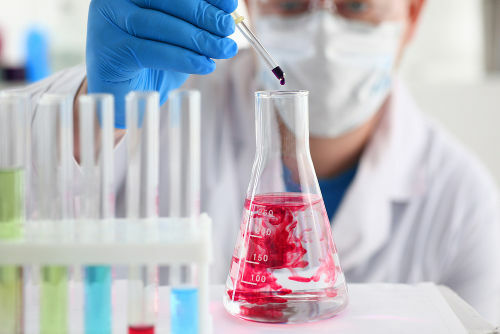Latent heat, also called transformation heat, is a physical quantity that designates the amount of heat received or given away by a body as its physical state changes.
It is important to highlight that in this transformation the temperature remains the same, that is, it does not consider this variation.
As an example, we can think of an ice cube that is melting. When it starts to change its physical state (solid to liquid), the water temperature remains the same in both states.
Formula
To calculate the latent heat the formula is used:
Q = m. L
Where,
Q: amount of heat (lime or J)
m: mass (g or kg)
L: latent heat (cal/g or J/Kg)
In the International System (SI), latent heat is given in J/Kg (Joule per kilogram). But it can also be measured in cal/g (calorie per gram).
Note that latent heat can have negative or positive values. Thus, if the substance is yielding heat, its value will be negative (exothermic process). This occurs in the solidification and liquefaction.
On the other hand, if it is receiving heat, the value will be positive (endothermic process). This occurs in the
Fusion and on vaporization.Read more: Endothermic and Exothermic Reactions.
Latent Heat of Vaporization
In latent heat the change of physical state occurs. That is, the substance can change from solid to liquid, from liquid to gas and vice versa.
When the change is from liquid phase to gas phase latent heat is called heat of vaporization (Lv).

Graph of water temperature variation and physical state changes
The latent heat of vaporization of water is 540 cal/g. That is, 540 cal is needed to evaporate 1 g of water at 100 °C.
In this case, the amount of heat needed (Q) is proportional to the mass of the substance (m):
Q = Lv. m
Where,
Lv: constant
Read too: Physical States of Water and Melting Point and Boiling Point.
Specific heat
O specific heat is the amount of heat needed to increase the temperature by 1°C of 1g of the element. Each element has a specific heat.
It is calculated by the formula:
c = Q/m. Δθ or c = C/m
Where,
ç: specific heat (cal/g°C or J/Kg. K)
Q: amount of heat (lime or J)
m: mass (g or kg)
Δθ: temperature variation (°C or K)
Ç: thermal capacity (cal/°C or J/K)
Note: Unlike latent heat, specific heat considers the temperature variation (end temperature minus start temperature) that occurs in the body.
Sensitive heat
In addition to the specific heat, the sensible heat it also causes changes in temperature. It is a different quantity from latent heat, as it modifies the temperature and not the change of state.
An example is when we heat a metal bar. The result will be observed by the increase in the temperature of the material, however, its solid state does not change.
To calculate the sensible heat the following formula is used:
Q = m. ç. Δθ
Q: amount of sensible heat (lime or J)
m: body mass (g or kg)
ç: specific heat of the substance (cal/g°C or J/Kg°C)
Δθ: temperature variation (°C or K)
Read too:
- Heat and Temperature
- Calorimetry
- heat propagation
- Thermal Capacity
Entrance Exam Exercises with Feedback
1. (Unifor-CE) An ice cube of mass 100 g, initially at a temperature of -20 °C, is heated until it becomes water at 40 °C (data: specific heat of ice 0.50 cal/g °C; specific heat of water 1.0 cal/g °C; melting heat of ice 80 cal/g). The amounts of sensible heat and latent heat exchanged in this transformation, in calories, were, respectively:
a) 8,000 and 5,000
b) 5,000 and 8,000
c) 5,000 and 5,000
d) 4,000 and 8,000
e) 1,000 and 4,000
Alternative b) 5,000 and 8,000
2. (UNIP-SP) The latent specific heat of melting ice is 80 cal/g. To melt an 80g mass of ice, without temperature variation, the amount of latent heat needed is:
a) 1.0 cal
b) 6.4 cal
c) 1.0 kcal
d) 64 kcal
e) 6.4. 103cal
Alternative e) 6.4. 103cal
3. (FUVEST) Use water at 80°C and ice at 0°C. It is desired to obtain 100 grams of water at a temperature of 40°C (after equilibrium), mixing water and ice in an insulating container with negligible heat capacity. It is known that the latent specific heat of melting ice is 80 cal/g and the sensible specific heat of water is 1.0 cal/g°C. The ice mass to be used is:
a) 5.0g
b) 12.5g
c) 25g
d) 33g
e) 50g
Alternative c) 25g



